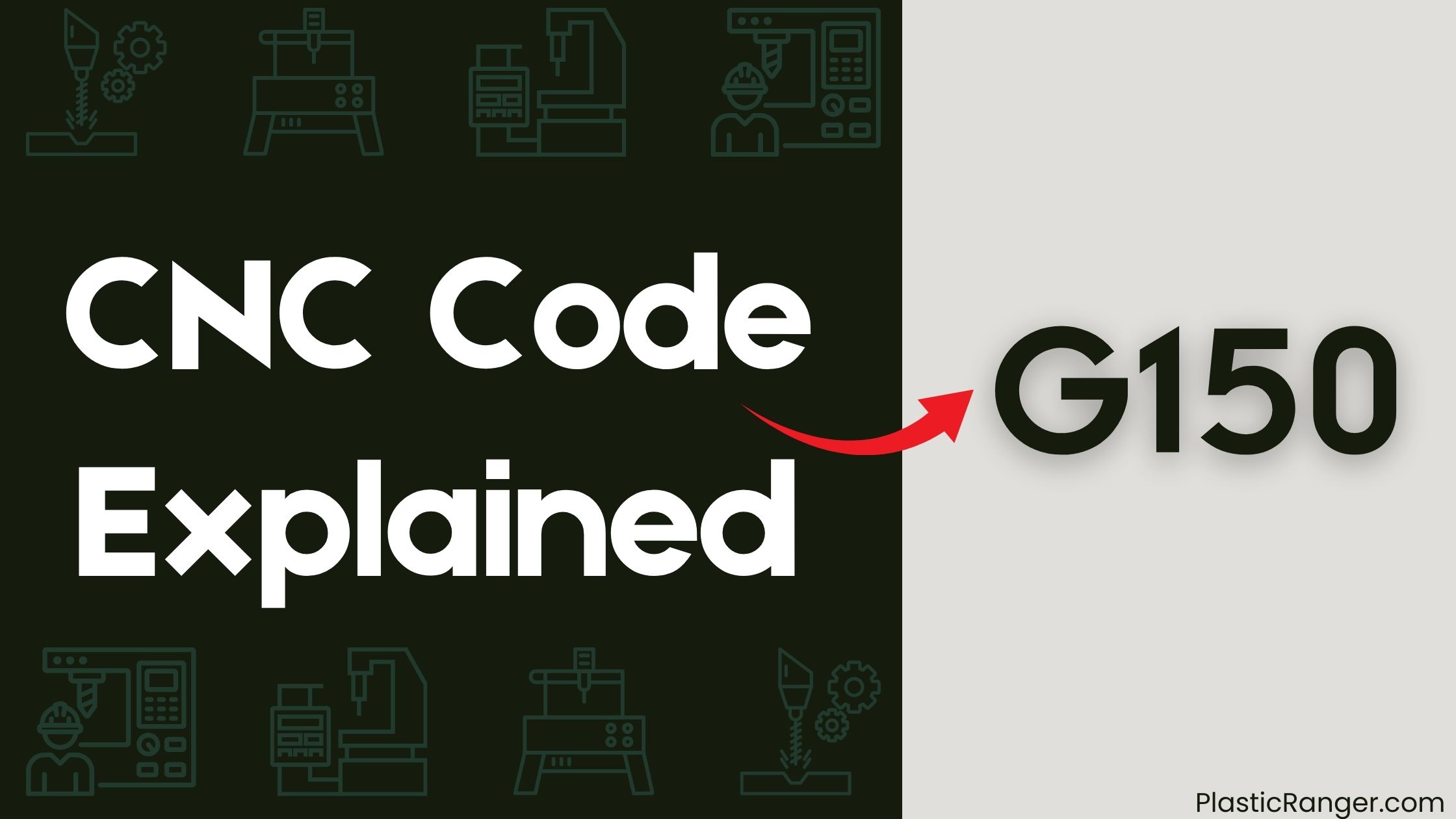Welcome to our simple guide on the G150 CNC code. Whether you are new to CNC programming or an experienced machinist, understanding the G150 code is essential.
This guide will explain everything you need to know about this unit mode command—what it is, when to use it, and why it matters.
(Step-by-step.)

Key Takeaways
- G150 command is a general-purpose pocket milling command for complex pocket milling operations, defining a finish pass amount on the pocket.
- The command executes multiple passes in the pocket area, starting from the R plane, with each Q (Z-Axis depth) pass to the final depth.
- Tool number and tool length offset must be specified in the Main Program to guarantee accurate cutting with the G150 command.
- Q value determines the incremental Z-axis cut depth per pass, controlling the number of passes required to reach the final depth.
- G150 command guarantees accurate and precise pocket milling, eliminating cutter comp issues, and is crucial for efficient pocket milling operations.
G150 Command Overview
As you delve into the world of CNC machining, understanding the G150 command is crucial, and it starts with recognizing its purpose and functionality.
The G150 command is a general-purpose pocket milling command that enables you to perform complex pocket milling operations efficiently. It defines a finish pass amount on the pocket, and if a K value is specified, a finish pass is performed by the K amount around the inside of pocket geometry for the last pass and is done at the final Z depth.
The command executes multiple passes in the pocket area, starting from the R plane, with each Q (Z-Axis depth) pass to the final depth. This allows you to control the Z-Axis cut depth per pass, ensuring a precise finish cut.
Subprogram Requirements
When you implement the G150 command, you’re likely to encounter subprograms that require specific settings to execute pocket milling operations successfully.
These subprograms typically include the selection of a suitable tool, which is vital for achieving the desired cutting results. In the Main Program, you need to specify the correct tool number and tool length offset to guarantee accurate cutting.
Additionally, the Z-axis movement is pivotal for controlling the cutting depth and avoiding collisions. To execute a successful pocket milling operation, the subprogram must be configured to cut at the correct depth and feed rate.
Example Programs and Outputs
What kind of examples do you need to successfully implement the G150 command for pocket milling operations? You need programs that demonstrate the use of the G150 command with various values to create different types of pockets with specific dimensions and finishes.
| Example Program | Description |
|---|---|
| O61501 | General-purpose pocket milling |
| O61506 | Square island pocket milling |
| O61508/O61509 | Square pocket with round island milling |
These example programs and subprograms illustrate how to use the G150 command to set spindle speed, cut depth per pass, and final Z. By following these examples, you can create pockets with specific dimensions and finishes. Keep in mind that the output of the example programs depends on the machine’s speed and settings.
Key Pointers and Reminders
You’ve now examined various example programs that demonstrate the G150 command’s capabilities in pocket milling operations.
As you move forward, keep in mind the following key pointers and reminders to guarantee successful G150 implementation:
- Drill the starting hole before running the G150 cycle to certify a successful pocket milling operation.
- The subprogram must be closed to define a complete pocket geometry for the G150 command to follow.
- The G150 cycle will remember the final depth and adjust the cutting passes accordingly, eliminating the need for manual depth adjustments.
The Q value determines the incremental Z-axis cut depth per pass, controlling the number of passes required to reach the final depth.
– The G150 command guarantees accurate and precise pocket milling, eliminating cutter comp issues, and the machine won’t get confused about the final cut depth.
Using G150 in a Program
Implementing the G150 command in a program allows for efficient and precise pocket milling operations.
When you use this command, you don’t need a starting hole with a Sutter cutting end mill. To successfully create a pocket, the G150 command must include all required values, such as P, F, D, I or J, K, and Q.
The program will repeat the G150 cycle until the final depth is reached, and you can change the spindle speed for different operations. The Q value determines the incremental Z-axis cut depth per pass, and the machine will adjust the cutting passes accordingly to reach the final depth.
In the X and Y axes, define a pocket geometry using G01, G02, and G03 motions in your subprogram, and the G150 command will work efficiently.
CNC Codes Similar to G150
Code | Mode |
|---|---|
| G12 | Clockwise Circular Pocket Milling |
| G13 | Counterclockwise Circular Pocket Milling |
| G51 | Scaling |
| G53 | Machine Coordinate System |
| G68 | Coordinate System Rotation |
| G101 | Mirror Image |
| G148 | Turning cut function OFF |
| G149 | End position queuing during an axis movement |
| G151 | Enables part scaling mode on the task. |
| G152 | Local coordinate system |
Quick Navigation
